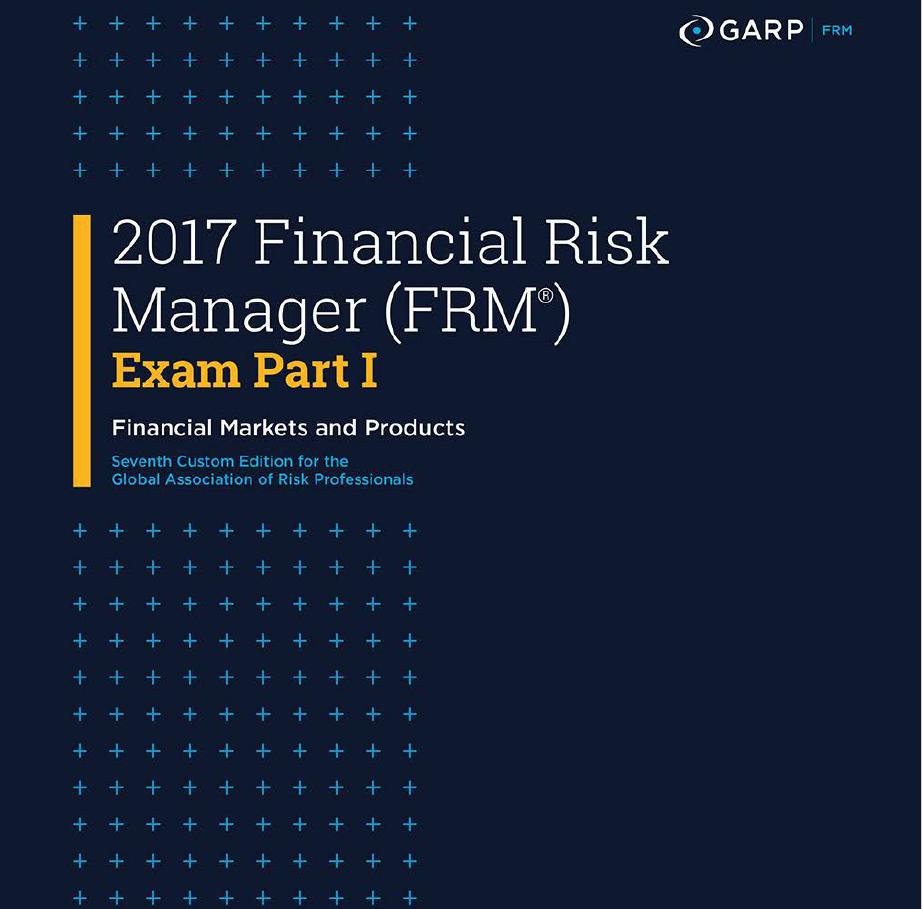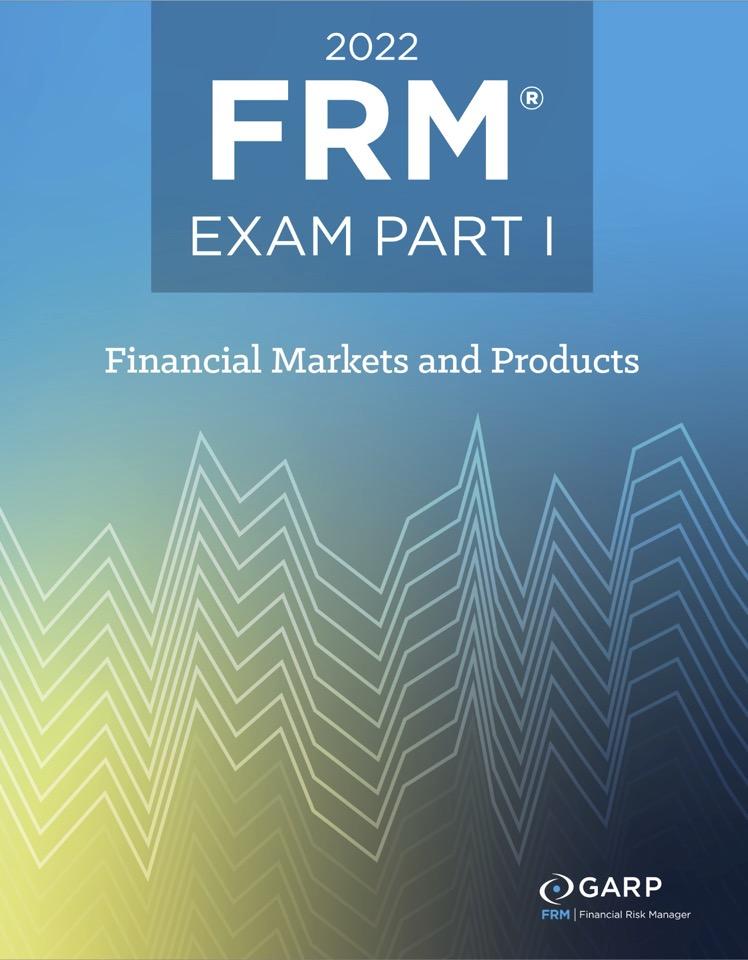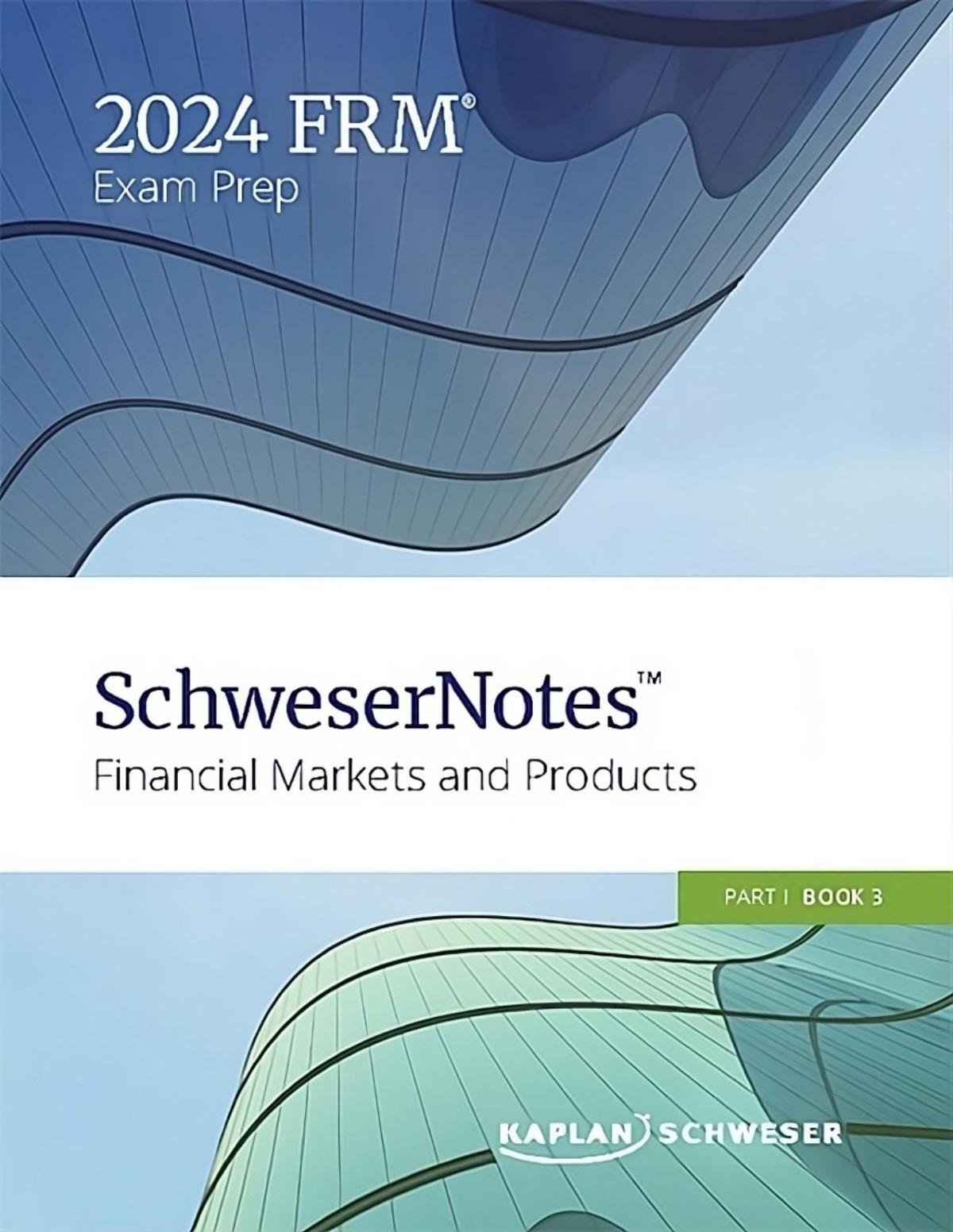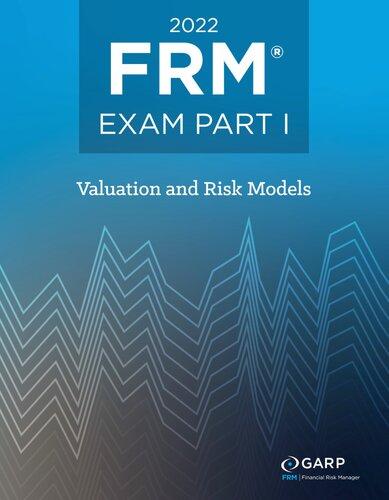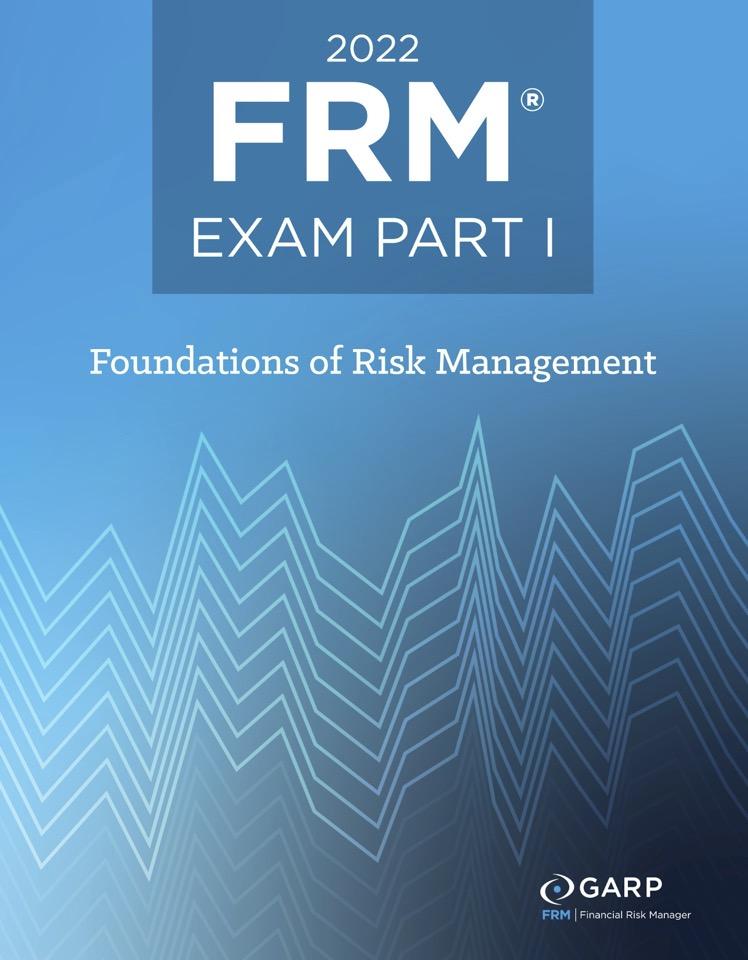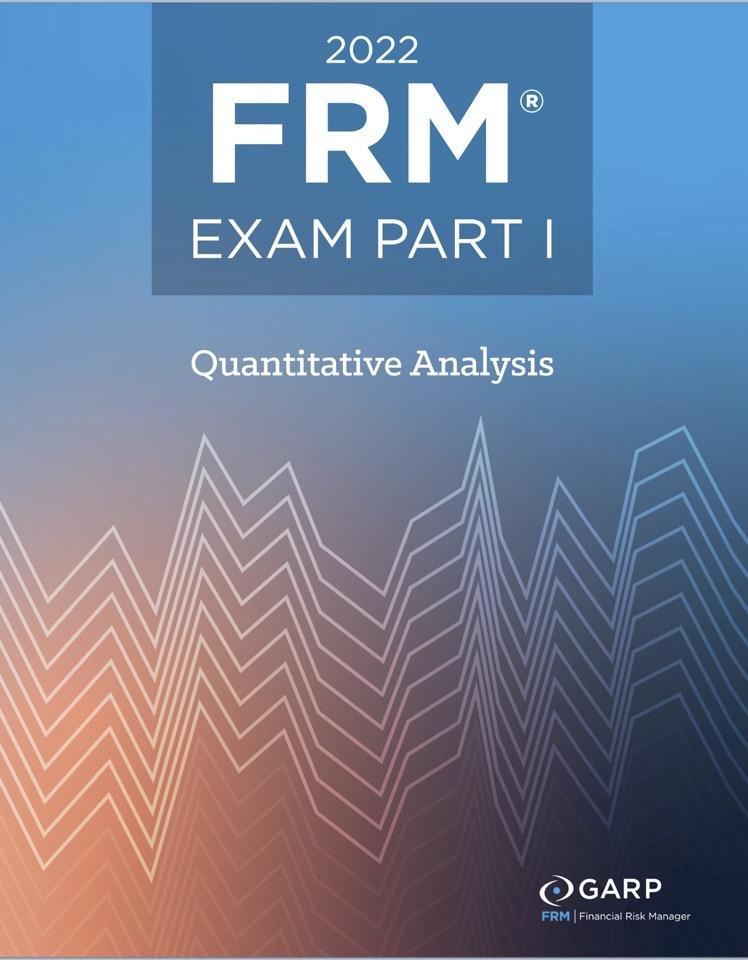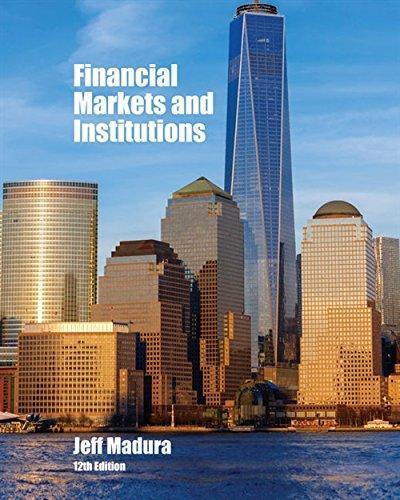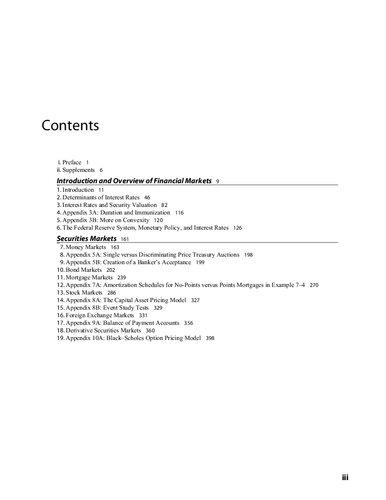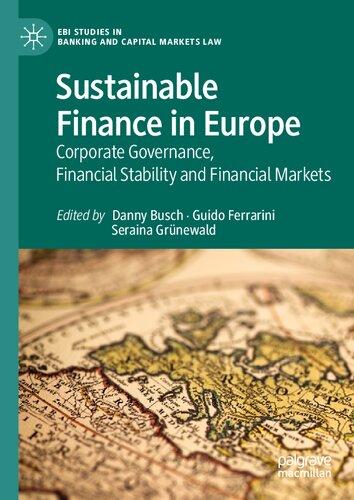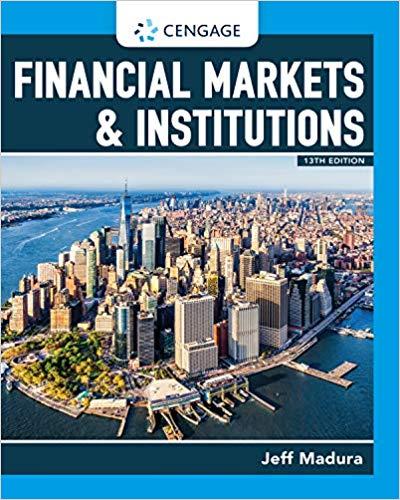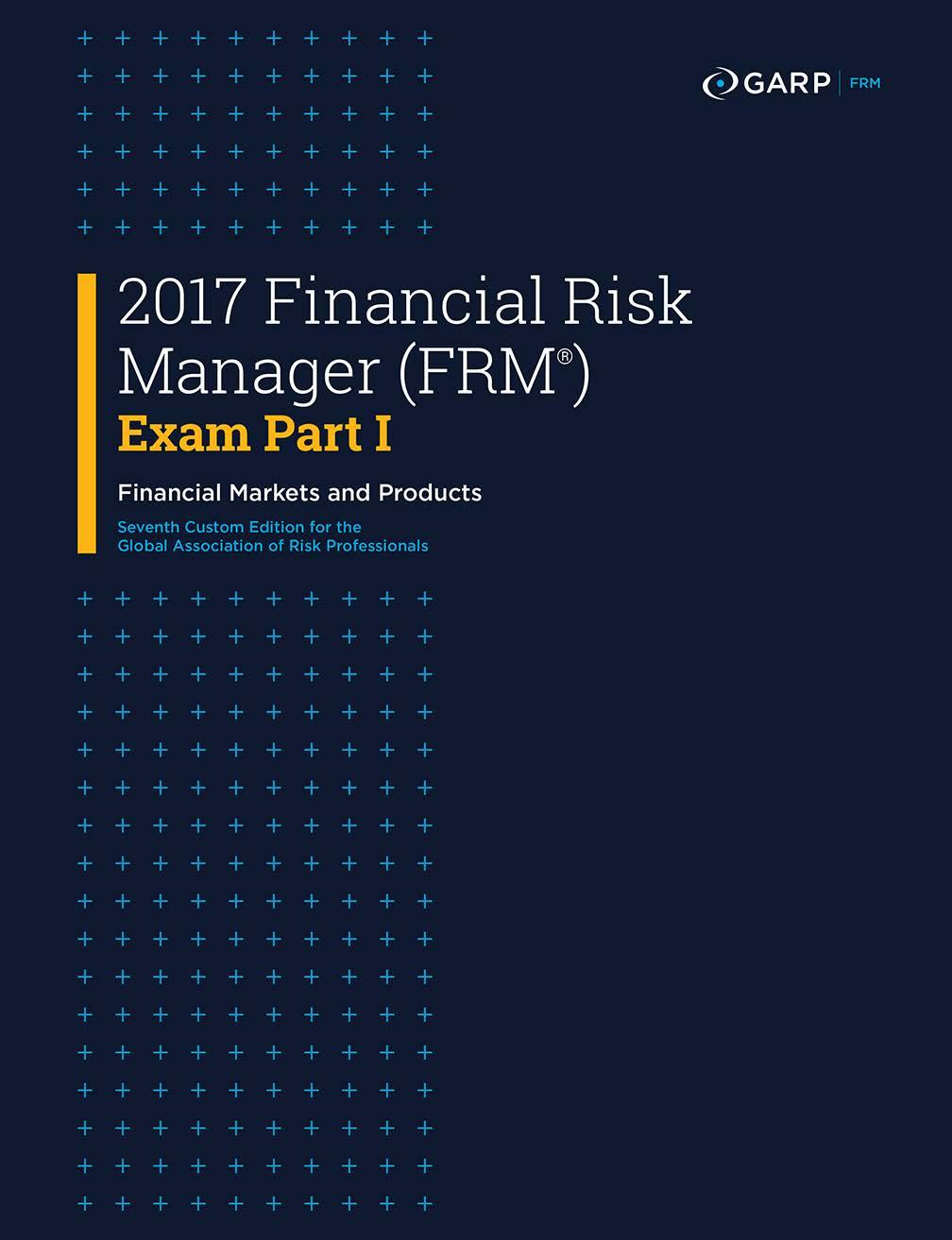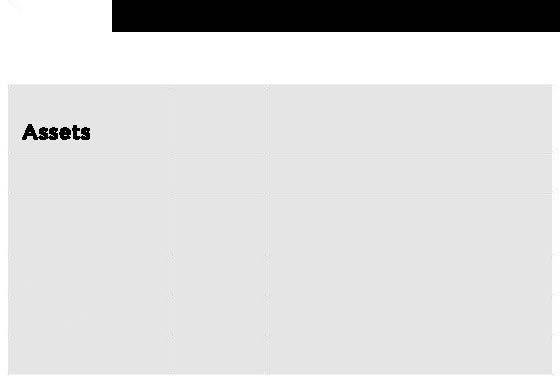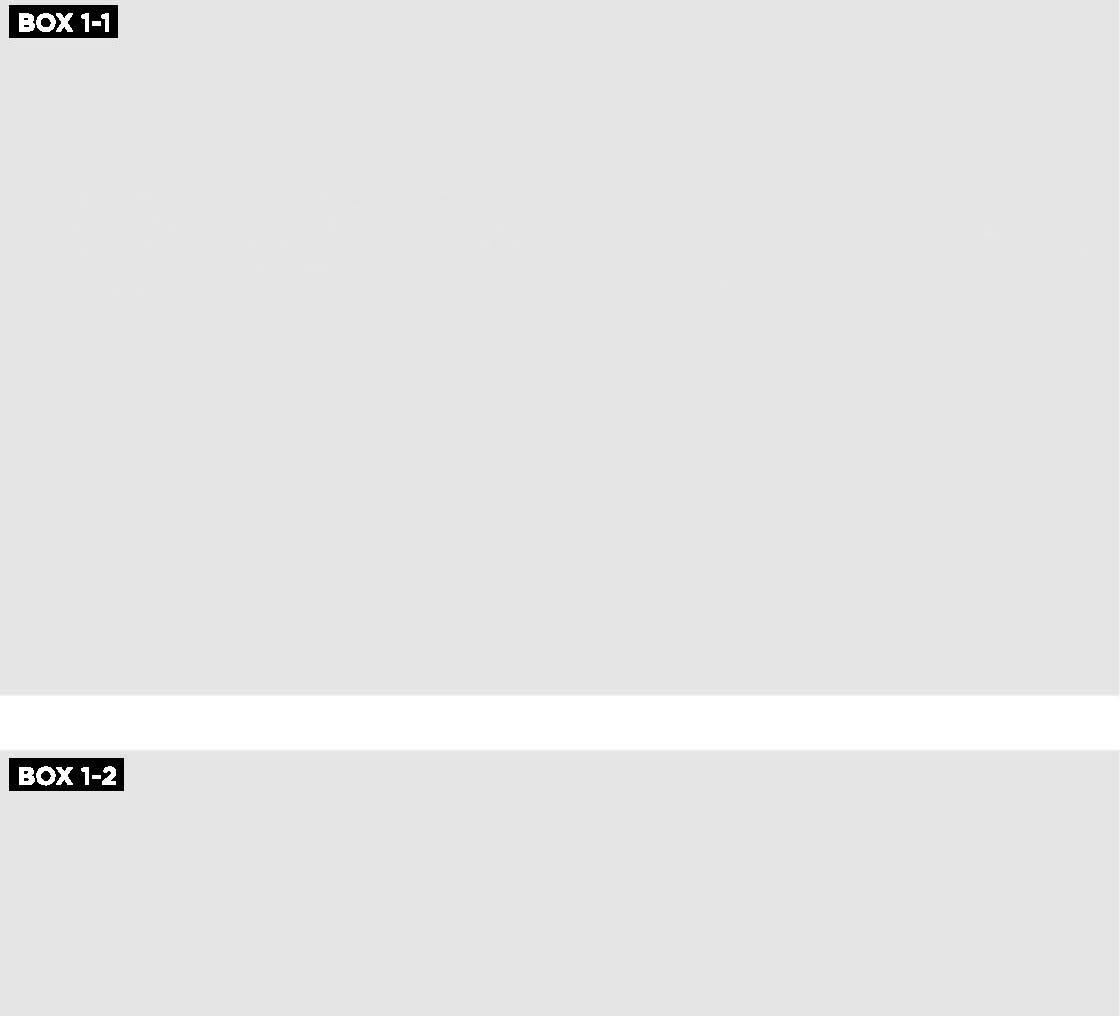Visit to download the full and correct content document: https://ebookmass.com/product/2017-financial-risk-manager-frm-exam-part-i-financial -markets-and-products-garp/
More products digital (pdf, epub, mobi) instant download maybe you interests ...
2022 FRM© Exam Part I Financial Markets & Products 1st Edition Garp (Global Association Of Risk Professionals)
https://ebookmass.com/product/2022-frm-exam-part-i-financialmarkets-products-1st-edition-garp-global-association-of-riskprofessionals/
SCHWESERNOTES™ 2024 FRM® PART I BOOK 3: FINANCIAL MARKETS AND PRODUCTS Kaplan Schweser
https://ebookmass.com/product/schwesernotes-2024-frm-part-ibook-3-financial-markets-and-products-kaplan-schweser/
2022 FRM© Exam Part I Valuation & Risk Models 1st Edition Garp (Global Association Of Risk Professionals)
https://ebookmass.com/product/2022-frm-exam-part-i-valuationrisk-models-1st-edition-garp-global-association-of-riskprofessionals/
2022 FRM© Exam Part I Foundations of Risk Management 1st Edition Garp (Global Association Of Risk Professionals)
https://ebookmass.com/product/2022-frm-exam-part-i-foundationsof-risk-management-1st-edition-garp-global-association-of-riskprofessionals/
2022 FRM© Exam Part I Quantitative Analysis 1st Edition
Garp (Global Association Of Risk Professionals)
https://ebookmass.com/product/2022-frm-exam-part-i-quantitativeanalysis-1st-edition-garp-global-association-of-riskprofessionals/
Financial Markets and Institutions 12th Edition
https://ebookmass.com/product/financial-markets-andinstitutions-12th-edition/
Financial Markets and Institutions 5th Edition Coll.
https://ebookmass.com/product/financial-markets-andinstitutions-5th-edition-coll/
Sustainable Finance in Europe: Corporate Governance, Financial Stability and Financial Markets Danny Busch
https://ebookmass.com/product/sustainable-finance-in-europecorporate-governance-financial-stability-and-financial-marketsdanny-busch/
(eBook PDF) Financial Markets & Institutions 13th Edition
https://ebookmass.com/product/ebook-pdf-financial-marketsinstitutions-13th-edition/
【梦轩考资www.mxkaozi.com】QQ106454842专业提供CFA
CustomEditionforthe GlobalAssociationofRiskProfessionals
Excerpts taken from:
Options,Futures, andOtherDerivatives, Ninth Edition by John C. Hull
Copyright© 2015, 2012, 2009, 2006, 2003, 2000, 1997, 1993 by Pearson Education, Inc. New York, New York 10013
DerivativesMarkets,Third Edition by RobertL. McDonald
Copyr1ght© 2013, 2006, 2003 by Pearson Education, Inc. Publlshed by Addison Wesley Boston, Massachusetts 02116
Copyright© 2017, 2016, 2015, 2014, 2013, 2012, 2011 by Pearson Education, Inc. Allrights reserved. Pearson custom Edition.
This copyright covers material written expressly for this volume by the editor/s as well as the compilation itself. It does not cover the individual selections herein that first appeared elsewhere. Permission to reprint these has been obtained by Pearson Education, Inc. for this edition only. Further reproduction by any means, electronlc or mechanlcal, lncludlng photocopying and recording, or by any Information storage or retr1eval system, must be arranged with the lndlvldual copyr1ght holders noted.
Grateful acknowledgment is made to the following sources for permission to reprint material copyrighted or controlled by them:
Excerpts from CentralCounterpartles: Mandatory ClearingandBiiateraiMargin RequirementsforOTC Derivatives, by Jon Gregory (2014), by permission of John Wiley &.Sons, Inc.
Excerpts from Options, Futures, and OtherDerivatives, 9thEdition, by John Hull (2014), by permission of Pearson Education.
"Commodity Forwards and Futures,"by Robert McDonald, repr1ntedfrom DerivativesMarkets,3rdedition (2012), by permission of Pearson Education.
"Foreign Exchange Risk,"by Marcia Millon Cornettand Anthony Saunders, repr1nted from RnandalInst:Jt:ut:Jons Management::ARiskManagementApproach,8thedition (2011), by permission of McGraw-Hiii Companies.
"Corporate Bonds,"by Steven Mann, Adam Cohen, and Frank Fabozzi, repr1nted from TheHandbookforFixed IncomeSecurities,8th edlt:lon, edited by Frank Fabozzi (2012), by permission of McGraw-Hill Companies.
"Mortgages and Mortgage-Backed Securities,"by BruceTuckman and AngelSerrat, repr1ntedfromRxed IncomeSecurities: ToolsforToday'sMarkets,3rdedition (2011), by permission ofJohnWiiey &Sons, Inc.
Excerpts from RiskManagement:andRnandalInst/t:utions,4thEdition, by John Hull (2012), by pennission ofJohn Wiley &.Sons, Inc.
All trademarks, service marks, registered tnldemarks, and registered service marks are the property oftheir respective owners and areusedhereinfor ldentlflcatlon purposes only.
Pearson Education, Inc., 330 Hudson street, New York, New York 10013 A Pearson Education Company www.pearsoned.com
•LearningObJectlves
Aftercompletingthisreadingyoushouldbeableto:
• Identifythe majorrisksfacedbyabank.
• Distinguishbetweeneconomiccapitaland regulatorycapital.
• Explainhowdepositinsurancegivesrisetoamoral hazard problem.
• Describeinvestmentbankingfinancing arrangementsincludingprivateplacement,public offering,bestefforts,firmcommitment,and Dutch auction approaches.
• Describethepotential conflictsofinterest amongcommercialbanking, securitiesservices, andinvestmentbankingdivisionsofabankand recommendsolutionstotheconflictofinterest problems.
• Describethedistinctionsbetweenthe"banking book"and the"tradingbook"ofabank.
• Explaintheoriginate-to-distributemodelofabank anddiscussitsbenefitsanddrawbacks.
Excerptis fromChapter2ofRiskManagementand Financial Institutions,4thEdition,byJohnHull.
Theword"bank"originatesfromtheItalianword"banco." Thisisadeskorbench,coveredbyagreentablecloth, thatwasusedseveralhundredyearsagobyFlorentine bankers.Thetraditionalroleofbankshasbeentotake depositsand makeloans.Theinterestchargedon the loansisgreaterthantheinterestpaidondeposits.Thedifferencebetweenthetwohastocoveradministrativecosts and loanlosses(i.e.,losseswhenborrowersfailtomake theagreedpaymentsofinterestandprincipal), whileproviding asatisfactoryreturnonequity.
Today,mostlargebanksengagein bothcommercialand investmentbanking.Commercialbankinginvolves,among otherthings,thedeposit-takingandlendingactivitieswe havejustmentioned.Investmentbanking isconcerned withassistingcompanies in raisingdebtandequity,and providingadviceonmergersandacquisitions,majorcorporaterestructurings,andothercorporatefinancedecisions.Largebanksarealsoofteninvolvedinsecurities trading(e.g.,byprovidingbrokerageservices).
Commercial banking canbeclassifiedasretailbanking orwholesalebanking. Retailbanking,asitsnameimplies, involvestakingrelativelysmalldepositsfromprivateindividualsorsmallbusinessesandmaking relativelysmall loanstothem.Wholesalebankinginvolvestheprovision ofbankingservicestomedium andlargecorporateclients,fundmanagers,andotherfinancialinstitutions.Both loansand depositsaremuch largerinwholesalebanking thaninretailbanking.Sometimesbanksfund theirlending byborrowinginfinancialmarketsthemselves. Typicallythe spreadbetweenthecostoffunds and the lendingrateissmallerforwholesalebanking thanforretail banking.However,thistendstobeoffsetbylowercosts. (Whenacertaindollaramountofwholesalelending is comparedtothe samedollaramountofretaillending,the expectedloanlossesandadministrativecostsareusually muchless.)Banksthatareheavilyinvolved inwholesale bankingandmayfundtheirlendingbyborrowinginfinancial marketsarereferredtoasmoneycenterbanks.
Thischapterwillreviewhowcommercialandinvestment bankinghaveevolvedintheUnitedStatesoverthelast hundredyears.Itwill takeafirstlookatthewaythebanks areregulated,thenatureoftherisksfacingthebanks, andthekeyroleofcapital in providingacushionagainst losses.
COMMERCIAL BANKING
Commercialbankinginvirtuallyallcountrieshasbeen subjecttoagreatdealofregulation.Thisis because most national governmentsconsideritimportantthatindividualsandcompanieshaveconfidenceinthebankingsystem. Amongtheissuesaddressedbyregulation isthecapital thatbanksmustkeep,theactivitiestheyareallowedto engagein,depositinsurance,andtheextenttowhich mergersandforeignownershipareallowed.Thenature ofbankregulationduringthetwentiethcenturyhas influencedthestructureofcommercialbankingindifferent countries.Toillustratethis,weconsiderthecaseofthe UnitedStates.
TheUnitedStatesisunusual in thatithasa largenumber ofbanks(5,809in2014).Thisleadstoarelativelycomplicatedpaymentsystemcomparedwiththoseofother countries withfewerbanks.Thereareafewlargemoney centerbankssuch asCitigroupandJPMorganChase. Thereareseveralhundred regional banksthatengageina mixtureofwholesaleand retailbanking,andseveralthousandcommunitybanksthatspecializeinretailbanking.
Table1-1summarizesthesizedistributionofbanksinthe UnitedStates in1984and 2014.Thenumberofbanks declinedbyover50%betweenthetwodates.In2014, therewerefewersmallcommunitybanks andmorelarge banksthan in1984.Althoughtherewereonly91banks (1.6%ofthetotal)withassetsof$10billion ormorein 2014,theyaccountedforover80%oftheassetsinthe U.S. banking system.
Thestructureofbanking intheUnitedStates islargelya resultofregulatoryrestrictionsoninterstatebanking.At thebeginningofthetwentiethcentury,mostU.S.banks hadasinglebranchfromwhichtheyservedcustomers. During theearlypartofthetwentiethcentury, manyof thesebanksexpandedbyopeningmorebranchesinorder toservetheircustomersbetter.Thisranintoopposition fromtwoquarters.First,smallbanksthatstillhadonlya singlebranchwereconcernedthattheywouldlosemarketshare.Second, largemoneycenterbankswereconcerned that themultibranchbankswould beabletooffer check-clearingandotherpaymentservicesanderodethe profitsthattheythemselvesmadefromofferingtheseservices.Asaresult,therewaspressuretocontroltheextent
Bank Concentration in the United States in 1984 and 2014
Source:FDICQuarterlyBankingProfile,www.fdic.gov.
towhichcommunitybankscouldexpand.Severalstates passedlawsrestrictingtheabilityofbankstoopen more thanonebranchwithinastate.
TheMcFaddenActwaspassedin1927andamendedin 1933. Thisacthadtheeffectofrestrictingall banksfrom opening branches in morethan onestate.This restrictionappliedtonationallycharteredaswell astostatecharteredbanks.Onewayofgettinground theMcFadden Actwastoestablishamultibankholdingcompany.Thisis acompanythatacquiresmorethanonebankasasubsidiary.By1956,therewere47multibankholdingcompanies. ThisledtotheDouglasAmendmenttotheBankHolding CompanyAct.Thisdid notallowamultibankholdingcompanytoacquireabankinastatethatprohibitedout-ofstateacquisitions.However,acquisitions priorto1956were grandfathered(thatis,multibankholdingcompaniesdid nothavetodisposeofacquisitionsmadepriorto1956).
Banksarecreativeinfindingwaysaroundregulationsparticularlywhenitisprofitableforthemtodoso.After 1956,oneapproachwastoformaone-bankholding
company.Thisisa holding companywithjustonebank asasubsidiaryandanumberofnonbanksubsidiariesin differentstatesfromthebank.Thenonbanksubsidiaries offeredfinancialservicessuchasconsumerfinance,data processing,andleasingandwereabletocreateapresenceforthe bankinotherstates.
The1970Bank HoldingCompaniesActrestrictedthe activitiesofone-bankholdingcompanies.Theywereonly allowedtoengageinactivitiesthatwerecloselyrelated tobanking, andacquisitionsbythemweresubjectto approvalbythe FederalReserve.Theyhadtodivestthemselvesofacquisitionsthatdidnotconformtotheact.
After1970,theinterstatebankingrestrictionsstartedto disappear.Individualstatespassed lawsallowingbanks fromotherstatestoenterand acquirelocalbanks.(Maine wasthefirsttodosoin1978.)Somestatesallowedfree entryofotherbanks.Someallowedbanksfromother statestoenteronlyiftherewerereciprocalagreements. (This means thatstateAallowedbanksfromstateBto enteronlyifstateBallowedbanksfromstateAtodoso.)
Insomecases,groupsofstatesdevelopedregionalbankingpactsthatallowed interstatebanking.
In1994,theU.S.CongresspassedtheRiegel-Neal InterstateBankingand Branching EfficiencyAct.ThisActled tofull interstatebankingbecomingareality.Itpermitted bankholdingcompaniestoacquire branches in other states.Itinvalidatedstatelawsthat allowed interstate bankingonareciprocalorregionalbasis. Starting in1997, bankholdingcompanieswereallowedtoconvertoutof-statesubsidiarybanksintobranchesofasinglebank. Manypeoplearguedthatthistypeofconsolidationwas necessarytoenableU.S.bankstobelargeenoughto competeinternationally.TheRiegel-NealActpreparedthe wayforawaveofconsolidationintheU.S.bankingsystem (forexample,theacquisitionbyJPMorganofbanksformerlynamedChemical,Chase,BearStearns,andWashingtonMutual).
Asaresultofthecreditcrisiswhichstartedin2007and ledtoanumberofbankfailures,theDodd-FrankWall StreetReformandConsumerProtectionActwassigned intolawbyPresidentObamaonJuly21,2010.Thiscreated ahostofnewagenciesdesignedtostreamlinetheregulatoryprocessintheUnitedStates.Animportantprovision ofDodd-FrankiswhatisknownastheVolckerrulewhich preventsproprietarytradingbydeposit-takinginstitutions. Bankscantradeinordertosatisfytheneedsoftheir clientsandtradetohedgetheirpositions,buttheycannot tradetotakespeculativepositions.Therearemanyother provisionsofDodd-Frank. Banks inothercountriesare implementing rulesthataresomewhatsimilarto,butnot exactlythesameas,Dodd-Frank.Thereisaconcernthat, intheglobal banking environmentofthe21stcentury, U.S. banksmayfindthemselvesatacompetitivedisadvantage ifU.S.regulationsaremorerestrictivethanthoseinother countries.
THE CAPITAL REQUIREMENTS OF A SMALL COMMERCIAL BANK
Toillustratetheroleofcapitalinbanking,weconsidera hypotheticalsmallcommunitybanknamed Depositsand LoansCorporation(DLC).DLCisprimarilyengagedinthe traditionalbankingactivitiesoftakingdepositsandmakingloans.AsummarybalancesheetforDLCattheendof 2015isshowninTable1-2andasummaryincomestatementfor2015isshowninTable1-3.

Table1-2showsthatthebankhas$100millionofassets. Mostoftheassets(80%ofthetotal)areloansmadeby thebanktoprivateindividualsandsmallcorporations. Cashand marketablesecuritiesaccountforafurther15% oftheassets.Theremaining5%oftheassetsarefixed assets(i.e.,buildings,equipment,etc.).Atotalof90%of thefundingfortheassetscomesfromdepositsofone sortoranotherfromthebank'scustomers.Afurther5% isfinancedbysubordinatedlong-termdebt.(Theseare bondsissuedbythebanktoinvestorsthatrankbelow depositsintheeventofaliquidation.)Theremaining5% is financedbythebank'sshareholders intheformofequity capital. Theequitycapitalconsistsoftheoriginalcash investmentoftheshareholdersandearningsretained in thebank.
Considernexttheincomestatementfor2015shownin Table1-3.Thefirstitemontheincomestatementisnet interestincome.Thisistheexcessoftheinterestearned overtheinterestpaidandis3%ofthetotalassetsin ourexample. Itisimportantforthe banktobemanaged sothatnetinterestincomeremainsroughlyconstant
regardlessofmovementsininterestratesofdifferent maturities.
Thenextitemisloanlosses.Thisis0.8%oftotalassetsfor theyearinquestion.Clearlyitisveryimportantformanagementtoquantifycreditrisksandmanagethemcarefully. Buthowevercarefullyabankassessesthefinancial healthofitsclientsbeforemakingaloan,itisinevitable thatsomeborrowerswilldefault.Thisiswhatleadsto loanlosses.The percentageofloansthatdefaultwilltend tofluctuatefromyeartoyearwitheconomicconditions. It islikelythatin someyearsdefaultrateswillbequitelow, whileinotherstheywill bequitehigh.
Thenextitem,non-interestincome,consistsofincome fromalltheactivitiesofthebankotherthanlendingmoney.This includesfeesfortheservicesthebank providesforitsclients.InthecaseofDLCnon-interest incomeis0.9%ofassets.
Thefinal itemis non-interestexpenseandis2.5%ofassets inourexample.Thisconsistsofallexpensesotherthan interestpaid.Itincludessalaries,technology-relatedcosts, and otheroverheads.Asinthecaseofalllargebusinesses,thesehaveatendencytoincreaseovertimeunless theyaremanagedcarefully. Banksmusttrytoavoidlarge lossesfromlitigation,businessdisruption, employeefraud, andsoon.Theriskassociatedwiththesetypesoflossesis knownasoperationalrisk.
Capltal Adequacy
Onemeasureoftheperformanceofabankisreturnon equity(ROE).Tables1-2and1-3showthattheDLC's before-taxROEis0.6/5or12%. Ifthisisconsidered unsatisfactory,onewayDLCmightconsiderimproving itsROEisbybuying backitssharesand replacingthem withdepositssothatequityfinancingislowerand ROE ishigher.Forexample,ifitmovedtothebalancesheet inTable1-4whereequityisreducedto1%ofassetsand depositsareincreasedto94%ofassets,itsbefore-tax ROEwouldjumpupto60%.
Howmuch equitycapitaldoesDLCneed?Thisquestion canbeansweredbyhypothesizinganextremelyadverse scenarioand considering whetherthebankwouldsurvive. Supposethatthereisasevererecessionandasaresult thebank's loan lossesriseby3.2%ofassetsto4%next year.(Weassumethatotheritemsontheincomestatement inTable1-3 areunaffected.)Theresultwillbea pre-taxnetoperatinglossof2.6%ofassets(0.6 -3.2=
ifJ:l!jttil Alternative Balance Sheet for DLC at End of 2015 with Equity Only 1% of Assets ($ miII ions)
-2.6).Assumingataxrateof30%,thiswould resultinan after-taxlossofabout1.8%ofassets.
InTable1-2,equitycapital is5%ofassetsandsoanaftertaxlossequalto1.8%ofassets,althoughnotatallwelcome,canbeabsorbed.Itwouldresultinareductionof theequitycapitalto3.2%ofassets.Evenasecondbad yearsimilartothefirstwouldnottotallywipeoutthe equity.
IfDLChasmovedtothemoreaggressivecapitalstructureshowninTable1-4,itisfarlesslikelytosurvive.One yearwheretheloan lossesare4%ofassetswouldtotally wipeoutequitycapitalandthebankwouldfinditselfin seriousfinancialdifficulties.Itwouldnodoubttrytoraise additionalequitycapital,butitislikelytofindthisdifficult wheninsuchaweakfinancialposition.Itispossiblethat therewouldbearunonthebank(whereall depositors decidetowithdrawfundsatthesametime)andthebank wouldbeforced intoliquidation.Ifallassetscouldbeliquidatedforbookvalue(abigassumption),thelong-term debt-holderswould likelyreceiveabout$4.2millionrather than$5million(theywouldineffectabsorbthenegative equity)andthedepositorswould berepaidinfull.
Clearly,itisinadequateforabanktohaveonly1%of assetsfundedbyequitycapital.Maintainingequitycapital equalto5%ofassetsasinTable1-2ismorereasonable. Notethatequityandsubordinatedlong-termdebtare bothsourcesofcapital. Equityprovidesthebestprotectionagainstadverseevents.(In ourexample,whenthe bankhas$5millionofequitycapitalratherthan$1million itstayssolventandisunlikelytobeliquidated.)Subordinatedlong-termdebt-holdersrankbelowdepositorsin Chapter1 Banks • 7
theeventofdefault,butsubordinateddebtdoesnotprovideasgoodacushionforthebankasequitybecause it doesnotpreventthe bank's insolvency.
Bankregulatorshavetriedtoensurethatthecapitala bankkeepsissufficienttocovertherisksittakes.The risksincludemarketrisks,creditrisks,andoperational risks.EquitycapitaliscategorizedasffTier1 capital"while subordinatedlong-termdebtiscategorizedas"Tier2 capital."
DEPOSIT INSURANCE
Tomaintainconfidenceinbanks,governmentregulators inmanycountrieshaveintroducedguaranty programs. Thesetypicallyinsuredepositorsagainstlossesuptoa certainlevel.
TheUnitedStateswithitslargenumberofsmallbanksis particularlypronetobankfailures.Afterthestockmarketcrashof1929theUnitedStatesexperiencedamajor recessionandabout10,000banksfailedbetween1930 and1933.Runsonbanksandpanicswerecommon.In 1933,theUnitedStatesgovernmentcreatedtheFederal DepositInsuranceCorporation(FDIC)toprovideprotectionfordepositors.Originally,themaximumlevelof protectionprovidedwas$2,500. Thishasbeenincreased severaltimesand became$250,000perdepositorper bankinOctober2008.Bankspayaninsurance premium thatisapercentageoftheirdomesticdeposits.Since 2007,thesizeofthepremiumpaid hasdependedonthe bank'scapital and howsafeitisconsideredtohebyregulators.Forwell-capitalized banks,the premium mightbe lessthan0.1%oftheamountinsured;forunder-capitalized banks,itcouldbeover0.35%oftheamountinsured. Upto1980,thesystemworkedwell.Therewerenoruns onbanksand few bankfailures.However,between1980 and1990,bankfailuresintheUnitedStatesaccelerated withthetotalnumberoffailuresduringthisdecadebeing over1,000(largerthanforthewhole1933to1979period). Therewereseveralreasonsforthis. Onewasthewayin whichbanksmanagedinterestrateriskandanotherreasonwasthereductioninoiland othercommodity prices which ledtomanyloanstooil, gas,and agriculturalcompaniesnotbeingrepaid.
Afurtherreasonforthebankfailureswasthattheexistenceofdeposit insuranceallowed bankstofollowriskY strategiesthatwouldnototherwisebefeasible.For
example,theycouldincreasetheirdepositbasebyofferinghigh ratesofinteresttodepositorsandusethefunds tomakeriskyloans. Withoutdepositinsurance,abank could notfollowthisstrategybecausetheirdepositors wouldseewhattheyweredoing, decidethatthebank wastoorisky,andwithdrawtheirfunds.Withdeposit insurance,itcanfollowthestrategybecausedepositors knowthat,iftheworsthappens,theyareprotectedunder FDIC.Thisisanexampleofwhatisknownasmoralhazard. Itcan bedefinedasthepossibilitythattheexistence ofinsurancechangesthebehavioroftheinsuredparty. Theintroductionofrisk-baseddepositinsurancepremiums hasreducedmoralhazardtosomeextent.
Duringthe1980s,thefundsofFDICbecameseriously depletedand ithadtoborrow$30 billionfromthe U.S. Treasury.InDecember1991,Congresspassedthe FDICImprovementActtopreventanypossibilityofthe fundbecoming insolventinthefuture. Between1991 and2006,bankfailuresintheUnitedStateswererelativelyrareand by2006the fund hadreservesofabout $50 billion. However,FDICfundswereagain depleted by thebanksthatfailedasa resultofthecreditcrisisthat started in2007.
INVESTMENT BANKING
Themainactivityofinvestmentbankingisraisingdebt andequityfinancingforcorporationsorgovemments. Thisinvolvesoriginatingthesecurities,underwriting them, andthenplacingthemwithinvestors. In atypicalarrangementacorporationapproachesaninvestmentbankindicatingthatitwantstoraiseacertainamountoffinance intheformofdebt,equity,orhybridinstrumentssuchas convertiblebonds.Thesecuritiesareoriginatedcomplete withlegaldocumentationitemizingtherightsofthesecurityholder.Aprospectusiscreated outlining thecompany'spastperformanceandfutureprospects.Therisks facedbythecompanyfromsuchthingsasmajorlawsuits areincluded.Thereisaffroadshow"inwhichtheinvestmentbankand seniormanagementfromthecompany attempttomarketthesecuritiestolargefundmanagers. Apriceforthesecuritiesisagreedbetweenthebankand thecorporation.Thebankthensellsthesecuritiesinthe market.
Thereareanumberofdifferenttypesofarrangement betweentheinvestmentbankandthecorporation.Sometimesthefinancing takestheformofaprivateplacement

inwhichthesecuritiesaresoldtoasmallnumberoflarge institutionalinvestors,suchaslifeinsurancecompanies orpensionfunds,andtheinvestmentbankreceivesafee. Onotheroccasionsittakestheformofapublicoffering,wheresecuritiesareofferedtothegeneralpublic.A publicofferingmaybeonabesteffortsorfirmcommitmentbasis. Inthecaseofa besteffortspublicoffering, theinvestmentbankdoesaswellasitcantoplacethe securitieswithinvestorsandispaidafeethatdepends,to someextent,onitssuccess.Inthecaseofafirmcommitmentpublicoffering,theinvestmentbankagreestobuy thesecuritiesfromtheissuerataparticularpriceand then attemptstoselltheminthemarketforaslightlyhigher price.Itmakesaprofitequaltothedifferencebetween thepriceatwhichitsellsthesecuritiesand thepriceit paystheissuer.Ifforanyreasonitisunabletosell the securities,itendsupowningthemitself.Thedifference betweenthetwoarrangementsisillustrated inExample1.1.
Examplal.1
Abankhas agreedtounderwritean issueof50million sharesbyABCCorporation.Innegotiationsbetweenthe bankandthecorporationthetargetpricetobereceived bythecorporationhasbeensetat$30pershare. This meansthatthecorporationisexpectingtoraise30x 50milliondollarsor$1.5billionintotal.Thebankcan eitheroffertheclientabesteffortsarrangementwhere itchargesafeeof$0.30 persharesoldsothat,assumingallsharesaresold,itobtainsatotalfeeof0.3x50= $15million.Alternatively,itcanofferafirmcommitment whereitagreestobuythesharesfromABCCorporation for$30pershare.
Thebankisconfidentthatitwillbeabletosell theshares, butisuncertainabouttheprice.Aspartofitsprocedures forassessingrisk,itconsiderstwoalternativescenarios. Underthefirstscenario,itcanobtain apriceof$32per share;underthesecondscenario,itisabletoobtainonly $29pershare.
Inabest-effortsdeal,thebankobtainsafeeof$15millioninbothcases.Inafirmcommitmentdeal,itsprofit dependsonthepriceitisabletoobtain. Ifitsellsthe sharesfor$32,itmakesaprofitof(32-30)x 50 = $100millionbecauseithasagreedtopayABCCorporation$30pershare. However;ifitcanonlyselltheshares for$29pershare,itloses(30-29)x 50 = $50million becauseitstillhastopayABCCorporation$30pershare.
Thesituationissummarized inthetablefollowing.The decisiontakenis likelytodependontheprobabilities assignedbythebanktodifferentoutcomesandwhatis referredtoasits"riskappetite."
ProfitsIfBest ProfitsIfFirm
Whenequityfinancingisbeingraisedandthecompany isalreadypubliclytraded,theinvestmentbankcanlook atthepricesatwhichthecompany'ssharesaretradinga fewdaysbeforetheissueistobesoldasaguidetothe issueprice.Typicallyitwillagreetoattempttoissuenew sharesatatargetpriceslightlybelowthecurrentprice. Themain riskthenisthatthepriceofthecompany's shareswillshowasubstantialdeclinebeforethenew sharesaresold.
IPOs
Whenthecompanywishingtoissuesharesisnotpublicly traded,theshareissueisknownasaninitialpublicoffering(IPO).Thesetypesofofferingaretypicallymadeona besteffortsbasis.Thecorrectofferingpriceisdifficultto determineanddependsontheinvestmentbank'sassessmentofthecompany'svalue.The bank'sbestestimate ofthemarketpriceisitsestimateofthecompany'svalue dividedbythenumberofsharescurrentlyoutstanding.However,thebankwilltypicallysettheoffering pricebelowitsbestestimateofthemarketprice.Thisis becauseitdoesnotwanttotakethechancethattheissue willnotsell.(Ittypicallyearnsthesamefeepersharesold regardlessoftheofferingprice.)
Oftenthereisa substantial increasein theshareprice immediatelyaftersharesaresold in an IPO(sometimes asmuchas40%),indicatingthatthecompanycouldhave raised more money iftheissuepricehad been higher.Asa result, IPOsareconsideredattractivebuysbymanyinvestors.BanksfrequentlyofferIPOstothefundmanagers thataretheirbestcustomersandtoseniorexecutivesof largecompaniesinthehopethattheywillprovidethem withbusiness.(Thelatterisknownas"spinning"and is frowned upon byregulators.)
Dutch Auction Approach
AfewcompanieshaveusedaDutch auction approachfor theirIPOs.AsforaregularIPO, aprospectusisissuedand usuallythereisaroadshow.Individualsandcompanies bid byindicatingthenumberofsharestheywantand the pricetheyarepreparedtopay.Sharesarefirstissuedto thehighestbidder,thentothenexthighestbidder,and soon,untilalltheshareshavebeensold.Thepricepaid byallsuccessful biddersisthelowestbidthatleadstoa shareallocation.ThisisillustratedinExample1.2.
Exampla1.2
AcompanywantstosellonemillionsharesinanIPO.It decidestousetheDutchauctionapproach.Thebidders areshowninthetablefollowing.Inthiscase,sharesare allocatedfirsttoC,thentoF,thentoE, thentoH, thento A.Atthis point,800,000shares havebeenallocated.The nexthighestbidderisDwhohas bid for300,000shares. Becauseonly200,000remainunallocated,D'sorderis onlytwo-thirdsfilled.Thepricepaidbyall theinvestors towhomsharesareallocated(A.C, D,E,F,and H) isthe pricebidbyD,or$29.00.
Dutchauctionspotentiallyovercometwoofthe problemswithatraditional IPOthatwehavementioned. First. the pricethatclearsthemarket($29.00 in Example1.2) should bethemarketpriceifallpotentialinvestorshave participatedinthebiddingprocess.Second,thesituations whereinvestmentbanksofferIPOsonlytotheirfavored clientsareavoided.However,thecompanydoes nottake advantageoftherelationshipsthatinvestmentbankers
havedevelopedwithlargeinvestorsthatusuallyenable theinvestmentbankerstosellan IPOveryquickly.One highprofileIPOthatusedaDutchauctionwastheGoogle IPO in2004.ThisisdiscussedinBox1-1.
Advisory Services
Inadditiontoassistingcompanieswith newissues of securities,investmentbanksofferadvicetocompanies onmergersand acquisitions,divestments,majorcorporaterestructurings, andsoon.Theywill assist infinding mergerpartnersand takeovertargetsorhelpcompanies findbuyersfordivisionsorsubsidiariesofwhichthey wanttodivestthemselves.Theywillalsoadvisethemanagementofcompanieswhicharethemselvesmergeror takeovertargets.Sometimestheysuggeststepsthey shouldtaketoavoid amergerortakeover.Theseare knownaspoisonpills.Examplesofpoison pillsare:
1. Apotentialtargetaddstoitscharteraprovision where,ifanothercompanyacquiresone-thirdofthe shares,othershareholdershavetherighttoselltheir sharestothatcompanyfortwicetherecentaverage shareprice.
2. Apotentialtargetgrantstoitskeyemployeesstock optionsthatvest(i.e.,canbeexercised)intheevent ofatakeover.Thisisliabletocreateanexodusofkey employeesimmediatelyafteratakeover,leavingan emptyshellforthenewowner.
3. Apotential targetaddsto itscharterprovisionsmaking itimpossibleforanewownertogetridofexisting directorsforoneortwoyearsafteranacquisition.
4. Apotentialtargetissuespreferredsharesthatautomaticallygetconvertedtoregularshareswhenthere isa change in control.
5. Apotentialtargetaddsaprovisionwhereexisting shareholdershavetherighttopurchasesharesata discountedpriceduringorafteratakeover.
I. Apotential targetchangesthevotingstructureso thatsharesownedbymanagementhavemorevotes thanthoseownedbyothers.
Poisonpills,whichareillegalinmanycountriesoutside theUnitedStates,havetobeapprovedbyamajorityof shareholders.Oftenshareholdersopposepoisonpills becausetheyseethemasbenefitingonlymanagement. Anunusualpoisonpill,triedbyPeopleSofttofightatakeoverbyOracle,isexplained in Box1-2.
l:I•}!ll$1 Google's IPO
Google,developerofthewell-knownInternetsearch engine,decidedtogopublicin2004. Itchosethe Dutch auctionapproach.Itwasassistedbytwoinvestment banks,MorganStanleyand CreditSuisseFirstBoston. TheSECgaveapprovalforitto raise funds uptoa maximumof$2,718,281,828.(Whytheoddnumber?
Themathematicalconstanteis2.7182818 )The IPO methodwasnota pure DutchauctionbecauseGoogle reservedtherighttochangethenumberofsharesthat wouldbeissuedandthe percentage allocatedtoeach bidderwhenitsawthebids.
Someinvestorsexpectedthepriceofthesharestobeas highas$120.ButwhenGooglesawthebids,itdecided thatthe numberofsharesofferedwouldbe19,605,052 atapriceof$85.This meant that the totalvalueofthe offeringwas19,605,052x85or$1.67billion.Investors who had bid $85oraboveobtained74.2%oftheshares theyhadbidfor.Thedateofthe IPOwasAugust19, 2004.Mostcompanieswould havegiveninvestorswho bid$85ormore100%ofthe amounttheybidforand raised $2.25billion,insteadof$1.67billion.Perhaps Google(stocksymbol:GOOG)correctlyanticipatedit wouldhavenodifficultyinsellingfurthersharesata higherprice later.
The initialmarketcapitalizationwas$23.1billionwith over90%ofthesharesbeingheldbyemployees.These employeesincludedthefounders,Sergei Brinand Larry
Page,andtheCEO,EricSchmidt.On thefirstdayof trading,thesharesclosedat$100.34,18%abovethe offerpriceandtherewasafurther7%increaseonthe secondday.Google'sissuethereforeprovedtobe underpriced-butnotasunderpricedassomeotherIPOs oftechnologystockswheretraditional IPOmethods wereused.
ThecostofGoogle'sIPO(feespaidtoinvestmentbanks, etc.)was2.8%oftheamountraised.This compareswith anaverageofabout4%foraregularIPO.
Thereweresome mistakes made and Googlewaslucky thatthesedid notpreventthe IPOfromgoingaheadas planned.SergeiBrinandLarryPagegaveaninterviewto PlayboymagazineinApril2004.Theinterviewappeared intheSeptemberissue.ThisviolatedSECrequirements thattherebea"quietperiod•withnopromotingofthe company'sstockinthe period leading uptoan IPO.To avoidSECsanctions,Google had toincludethePlayboy interview(togetherwithsomefactualcorrections)inits SECfilings.Google alsoforgottoregister23.2million sharesand5.6millionstockoptions.
Google'sstockprice roserapidlyintheperiodafterthe IPO.Approximatelyoneyearlater(inSeptember2005) itwasabletoraiseafurther$4.18billionbyissuingan additional14,159,265sharesat$295.(Whythe odd number?The mathematicalconstant1Tis3.14159265...)
I PeopleSoft's Poison Pill
In2003,the managementofPeopleSoft,Inc.,acompany thatprovidedhumanresourcemanagementsystems, wasconcerned aboutatakeoverbyOracle,acompany specializingindatabasemanagementsystems. Ittook the unusual stepofguaranteeingtoitscustomersthat, ifitwereacquiredwithintwoyearsand productsupport wasreduced withinfouryears,itscustomerswould receivearefundofbetweentwoandfivetimesthefees paidfortheirsoftwarelicenses.The hypotheticalcostto
Valuation,strategy,andtacticsarekeyaspectsofthe advisoryservicesofferedbyaninvestmentbank.For example,inadvisingCompanyAonapotentialtakeoverofCompanyB,itisnecessaryfortheinvestment banktovalueCompanyBand helpCompanyAassess possiblesynergies betweentheoperationsofthetwo companies.Itmustalsoconsiderwhetheritisbetterto offerCompanyB'sshareholderscashorashare-for-share
Oraclewasestimatedat$1.5billion.Theguaranteewas opposedbyPeopleSoft'sshareholders.(Itappearsto be notintheirinterests.)PeopleSoftdiscontinuedthe guaranteeinApril2004.
Oracledid succeedinacquiring PeopleSoftin December2004.AlthoughsomejobsatPeopleSoft wereeliminated,Oraclemaintainedatleast90%of PeopleSoft'sproductdevelopmentandsupportstaff.
exchange(i.e.,acertainnumberofsharesinCompanyA inexchangeforeachshareofCompanyB).Whatshould theinitialofferbe?Whatdoesitexpectthefinalofferthat willclosethedealtobe?Itmustassessthebestwayto approachtheseniormanagersofCompanyBandconsiderwhatthe motivationsofthemanagerswillbe.Will thetakeoverbeahostileone(opposed bythemanagementofCompanyB)orfriendlyone(supportedbythe
managementofCompanyB)?Insomeinstancestherewill beantitrustissuesandapprovalfromsomebranchofgovernmentmayberequired.
SECURITIES TRADING
Banksoftengetinvolvedinsecuritiestrading,providing brokerageservices,andmakingamarketinindividual securities.Indoingso,theycompetewithsmallersecuritiesfirmsthatdonotofferotherbankingservices.As mentionedearlier,theDodd-FrankactintheUnitedStates doesnotallowbankstoengageinproprietarytrading.In someothercountries,proprietarytradingisallowed,but itusuallyhastobeorganizedsothatlossesdonotaffect depositors.
Mostlargeinvestmentandcommercial bankshaveextensivetradingactivities.Apartfromproprietarytrading (which mayormaynotbeallowed),bankstradetoprovideservicestotheirclients.(Forexample,abankmight enterintoaderivativestransactionwithacorporateclienttohelpitreduceitsforeignexchangerisk.)Theyalso trade(typicallywithotherfinancialinstitutions)tohedge theirrisks.
Abrokerassists in thetradingofsecuritiesbytaking ordersfromclientsandarrangingforthemtobecarried outonanexchange.Somebrokersoperatenationally, andsomeserveonlyaparticularregion.Some,known as full-servicebrokers,offerinvestmentresearch and advice. Others,knownasdiscountbrokers,chargelowercommissions,butprovidenoadvice.Someofferonlineservices, andsome, suchasPTrade,providea platformforcustomerstotradewithoutabroker.
Amarketmakerfacilitatestradingbyalwaysbeingpreparedtoquoteabid (the priceatwhich itisprepared tobuy)andanoffer(thepriceatwhich itispreparedto sell).Whenprovidingaquote,itdoesnotknowwhether thepersonrequestingthequotewantstobuyorsell.The marketmakermakesaprofitfromthespreadbetween the bidandtheoffer,buttakestheriskthatitwillbeleftwith anunacceptablyhighexposure.
Manyexchangesonwhichstocks,options,and futures tradeusemarketmakers.Typically,anexchangewill specifya maximum levelforthesizeofamarketmaker's bid-offerspread(thedifferencebetweentheofferand thebid).Bankshaveinthepastbeenmarketmakersfor instrumentssuchasforwardcontracts,swaps, andoptions
tradingintheover-the-counter(OTC)market.Thetradingandmarketmaking ofthesetypesofinstrumentsis nowincreasinglybeingcarriedoutonelectronicplatforms thatareknownasswapexecutionfacilities(SEFs) in the UnitedStatesandorganizedtradingfacilities(OTFs)in Europe.
POTENTIAL CONFLICTS OF INTEREST IN BANKING
Therearemanypotentialconflictsofinterestbetween commercialbanking,securitiesservices,and investment bankingwhentheyareallconductedunderthesamecorporateumbrella. Forexample:
1. Whenaskedforadvicebyaninvestor;abankmight betemptedtorecommendsecuritiesthattheinvestmentbanking partofitsorganizationistrying to sell. When ithasafiduciaryaccount(i.e.,acustomer accountwherethebankcanchoosetradesforthe customer),thebankcan"stuff"difficult-to-sellsecuritiesintotheaccount.
::Z. Abank,whenitlendsmoneytoacompany,often obtainsconfidentialinformationaboutthecompany. Itmightbetemptedtopassthatinformationtothe mergersand acquisitionsarmoftheinvestmentbank tohelpitprovideadvicetooneofitsclientsonpotentialtakeoveropportunities.
.J. Theresearchendofthesecuritiesbusiness mightbe temptedtorecommendacompany'sshareasa"buy" inordertopleasethecompany'smanagementand obtain investmentbankingbusiness.
4. Supposeacommercial banknolongerwantsaloan ithasmadetoacompanyonitsbooksbecausethe confidential information ithasobtainedfromthe companyleadsittobelievethatthereisanincreased chanceofbankruptcy. Itmightbetemptedtoask theinvestmentbanktoarrangeabondissueforthe company,withtheproceedsbeingusedtopayoff theloan.Thiswould havetheeffectofreplacingits loanwithaloanmadebyinvestorswhowereless well-informed.
Asaresultofthesetypesofconflictsofinterest,some countrieshaveinthepastattemptedtoseparatecommerciaIbankingfrominvestmentbanking.TheGlassSteagallActof1933intheUnitedStateslimitedtheability ofcommercialbanksand investmentbankstoengagein
eachother'sactivities.Commercialbankswereallowed tocontinueunderwritingTreasuryinstrumentsandsome municipalbonds.Theywerealsoallowedtodoprivate placements. Buttheywerenotallowedtoengageinother activities suchaspublicofferings.Similarly,investment bankswerenotallowedtotakedepositsand makecommercialloans.
In1987,theFederalReserveBoardrelaxedtherulessomewhatandallowed bankstoestablishholdingcompanies withtwosubsidiaries,oneininvestmentbankingandthe otherincommercialbanking,Therevenueoftheinvestmentbankingsubsidiarywasrestrictedtobeing acertain percentageofthegroup'stotalrevenue.
In1997,theruleswererelaxedfurthersothatcommercial bankscouldacquireexistinginvestmentbanks.Finally, in1999,theFinancialServicesModernizationActwas passed.Thiseffectivelyeliminatedallrestrictionsonthe operationsofbanks,insurancecompanies,andsecurities firms. In2007,therewerefivelargeinvestmentbanksin theUnitedStatesthathadlittleornocommercialbankinginterests.ThesewereGoldmanSachs, MorganStanley,Merrill Lynch, BearStearns,and Lehman Brothers. In2008,thecreditcrisis ledtoLehmanBrothersgoing bankrupt, BearStearnsbeingtakenoverbyJPMorgan Chase,and Merrill LynchbeingtakenoverbyBankof America.GoldmanSachsandMorganStanleybecame bankholdingcompanieswithbothcommercial and investmentbankinginterests.(Asaresult,theyhavehadto subjectthemselvestomoreregulatoryscrutiny.)Theyear 2008thereforemarkedtheend ofaneraforinvestment banking intheUnitedStates.
WehavenotreturnedtotheGlass-Steagallworldwhere investmentbanksand commercial bankswerekeptseparate. Butincreasinglybanksarerequiredtoringfence theirdeposit-takingbusinessessothattheycannot be affectedby lossesininvestmentbanking.
TODAY1S LARGE BANKS
Today'slargebanksoperategloballyand transactbusinessinmanydifferentareas.Theyarestillengaged in thetraditionalcommercialbankingactivitiesoftaking deposits,makingloans,andclearingchecks(both nationallyandinternationally).Theyofferretailcustomerscredit cards,telephonebanking,Internetbanking,and automatic tellermachines(ATMs).Theyprovidepayrollservicesto
businessesand,asalreadymentioned,theyhavelarge tradingactivities.
Banksofferlinesofcredittobusinessesandindividual customers.Theyprovidearangeofservicestocompanies whentheyareexportinggoodsandservices.Companiescanenterintoavarietyofcontractswithbanksthat aredesignedtohedgeriskstheyfacerelatingtoforeign exchange,commodityprices,interestrates,andother marketvariables. Evenrisksrelatedtotheweathercanbe hedged.
Banksundertakesecuritiesresearchandoffer"buy,""sell," and"hold"recommendationsonindividualstocks.They offerbrokerageservices(discountand fullservice).They offertrustserviceswheretheyarepreparedtomanageportfoliosofassetsforclients.Theyhaveeconomics departmentsthatconsidermacroeconomictrendsand actionslikelytobetakenbycentral banks. Thesedepartmentsproduceforecastsoninterestrates,exchangerates, commodityprices,andothervariables. Banksoffera rangeofmutualfundsandinsomecaseshavetheirown hedgefunds.Increasinglybanksareofferinginsurance products.
Theinvestmentbankingarmofabankhascompletefreedom tounderwritesecuritiesforgovernmentsandcorporations. Itcanprovideadvicetocorporationsonmergers andacquisitionsandothertopicsrelatingtocorporate finance.
Thereareinternal barriersknownasChinesewalls.These internalbarriersprohibitthetransferofinformation fromonepartofthebanktoanotherwhen this isnotin thebestinterestsofoneormoreofthebank'scustomers.Therehavebeensomewell-publicized violations ofconflict-of-interestrulesbylargebanks.Thesehave ledtoheftyfinesandlawsuits.Topmanagementhasa bigincentivetoenforceChinesewalls.Thisisnotonly becauseofthefinesandlawsuits.Abank'sreputationis itsmostvaluableasset.Theadversepublicityassociated withconflict-of-interestviolationscanleadtoalossof confidence in thebankand business beinglostinmany differentareas.
Accounting
Itisappropriateatthispointtoprovideabriefdiscussion ofhowabankcalculatesaprofitorlossfromitsmany diverseactivities.Activitiesthatgeneratefees,suchas mostinvestmentbankingactivities,arestraightforward.
Accrualaccountingrulessimilartothosethatwouldbe usedbyanyotherbusinessapply.
Forotherbankingactivities,thereisanimportantdistinctionbetweenthe"bankingbook"andthe"tradingbook." Asitsnameimplies,thetradingbookincludesall the assetsandliabilitiesthebankhasasaresultofitstrading operations.Thevaluesoftheseassetsand liabilitiesare markedtomarketdaily. Thismeansthatthevalueofthe bookisadjusteddailytoreflectchangesinmarketprices. Ifabanktraderbuysanassetfor$100ononedayand the pricefallsto$60thenextday,thebankrecordsanimmediatelossof$40-evenifithasnointentionofsellingthe assetintheimmediatefuture.Sometimesitisnoteasy toestimatethevalueofacontractthathasbeenentered intobecausetherearenomarketpricesforsimilartransactions.Forexample,theremightbealackofliquidityin themarketoritmightbethecasethatthetransactionisa complexnonstandardderivativethatdoesnottradesufficientlyfrequentlyforbenchmarkmarketpricestobeavailable.Banksareneverthelessexpectedtocomeupwitha marketpriceinthesecircumstances.Oftenamodelhas tobeassumed.Theprocessofcomingupwitha"market price"isthensometimestermedmarkingtomodel
Thebankingbookincludesloansmadetocorporations andindividuals.Thesearenotmarkedtomarket. Ifa
borrowerisup-to-dateonprincipalandinterest payments onaloan,theloan isrecordedinthebank'sbooksatthe principalamountowedplusaccruedinterest.Ifpayments duefromtheborroweraremorethan90dayspastdue, theloanisusuallyclassifiedasanon-performingJoan.The bankdoesnotthenaccrueintereston theloanwhencalculating itsprofit.Whenproblemswiththeloanbecome moreseriousand itbecomeslikelythatprincipal will not berepaid,the loan isclassified asa loan loss.
A bankcreatesareserveforloanlosses.Thisisacharge againsttheincomestatementforanestimateofthe loanlossesthatwillbeincurred.Periodicallythereserve isincreased ordecreased.Abankcan smooth out its incomefromoneyeartothenextbyoverestimating reservesingoodyearsandunderestimatingthem in bad years.Actual loan lossesarechargedagainstreserves. Occasionally,asdescribedinBox1-3,abankresortsto artificialwaysofavoidingtherecognitionofloanlosses.
The Originate-to-Distribute Model
DLC,thesmallhypothetical bankwelookedatin Tables1-2to1-4,tookdepositsandusedthemtofinance loans.Analternativeapproachisknownastheoriginateto-distributemodel.Thisinvolvesthebankoriginatingbut
l:f•)!ifl How to Keep Loans Performing
Whenaborrowerisexperiencingfinancialdifficulties and isunabletomakeinterestand principal paymentsas theybecomedue,itissometimestemptingtolendmore moneytotheborrowersothatthepaymentsonthe oldloanscan bekeptuptodate. This isanaccounting game,sometimesreferredtodebtrescheduling. Itallows interestontheloanstobeaccruedandavoids(orat leastdefers)therecognitionofloanlosses.
Inthe1970s,banks intheUnitedStatesandother countries lenthugeamountsofmoneytoEastern European, LatinAmerican.and otherlessdeveloped countries(LDCs).Someoftheloansweremadetohelp countriesdeveloptheirinfrastructure,butotherswere lessjustifiable(e.g.,onewastofinancethecoronation ofarulerinAfrica).Sometimesthemoneyfound itsway intothepocketsofdictators.Forexample,the Marcos family inthePhilippinesallegedlytransferredbillionsof dollars intoitsownbankaccounts.
Intheearly1980s,manyLDCswereunabletoservice theirloans.Oneoptionforthem wasdebtrepudiation, butamoreattractivealternativewasdebtrescheduling. Ineffect,thisleadstotheinterestontheloansbeing capitalizedand bankfundingrequirementsforthe loanstoincrease.Well-informedLDCSwereawareof thedesireofbankstokeeptheirLDCloansperforming sothatprofitslookedstrong.Theywerethereforein astrong negotiating positionastheirloansbecame 90daysoverdueand bankswereclosetohavingto producetheirquarterlyfinancialstatements.
In1987,Citicorp(nowCitigroup)tooktheleadinrefusing torescheduleLDCdebtandincreaseditsloanloss reservesby$3billioninrecognitionofexpectedlosses onthedebt.Other bankswith large LDCexposures followedsuit.
notkeepingloans.Portfoliosofloansarepackagedinto trancheswhicharethensoldtoinvestors.
Theoriginate-to-distributemodelhasbeen used inthe U.S.mortgagemarketformanyyears. In ordertoincrease theliquidityoftheU.S.mortgagemarketandfacilitatethe growthofhomeownership,threegovernmentsponsored entitieshavebeencreated:theGovernment National MortgageAssociation(GNMA)or"GinnieMae,utheFederalNationalMortgageAssociation(FNMA)or"Fannie Mae,uandtheFederalHomeLoan MortgageCorporation (FHLMC)or"FreddieMac."Theseagenciesbuypools ofmortgagesfrombanksand othermortgageoriginators,guaranteethetimelyrepaymentofinterestand principal,andthenpackagethecashflowstreamsand sellthemtoinvestors.Theinvestorstypicallytakewhat isknownasprepaymentrisk.Thisistheriskthatinterest rateswilldecrease and mortgageswillbepaidoffearlier thanexpected. However,theydonottakeanycreditrisk becausethemortgagesareguaranteedbyGNMA, FNMA, orFHLMC. In1999, FNMAand FHLMCstartedtoguaranteesubprimeloansandasaresultranintoseriousfinancial difficulties.1
Theoriginate-to-distributemodel hasbeenusedfor manytypesofbanklendingincludingstudentloans,commercialloans,commercialmortgages,residentialmortgages,andcreditcard receivables. In manycasesthere isnoguaranteethatpaymentwillbemadesothatitis theinvestorsthat bearthecreditriskwhen theloansare packaged andsold.
Theoriginate-to-distributemodelisalsotermedsecuritizationbecausesecuritiesarecreatedfromcashflow streamsoriginatedbythe bank. Itisanattractivemodel forbanks.Bysecuritizingitsloansitgetsthemoffthebalancesheetandfreesupfundstoenableittomakemore loans.Italsofreesupcapitalthatcanbeusedtocover risksbeingtakenelsewhereinthebank. (Thisisparticularlyattractiveifthebankfeelsthatthecapitalrequired byregulatorsforaloanistoohigh.)Abankearnsafeefor originatinga loan andafurtherfeeifitservicestheloan afterithasbeensold.
1GNMAhasalwaysbeengovernmentownedwhereasFNMA and FHLMC usedtobeprivatecorporationswithshareholders. As aresultoftheirfinanciaIdifficultiesin2008,theU.S.governmenthadtostepinandassumecompletecontrolofFNMA andFHLMC.
Theoriginate-to-distribute modelgotoutofcontrol duringthe2000to2006period.Banksrelaxedtheirmortgagelendingstandardsandthecreditqualityofthe instrumentsbeingoriginateddeclinedsharply.Thisled toaseverecreditcrisisandaperiodduringwhichthe originate-to-distributemodelcouldnotbeusedbybanks becauseinvestorshadlostconfidenceinthesecurities thathadbeencreated.
THE RISKS FACING BANKS
Abank'soperationsgiverisetomanyrisks. Muchofthe restofthisbookisdevotedtoconsideringtheserisksin detail.
Centralbankregulatorsrequirebankstoholdcapitalfor the riskstheyarebearing.In1988,internationalstandards weredevelopedforthedeterminationofthiscapital. Capitalisnowrequiredforthreetypesofrisk:creditrisk, marketrisk,and operational risk.
Creditriskistheriskthat counterpartiesinloantransactionsandderivativestransactionswilldefault. Thishas traditionallybeenthegreatestriskfacingabankand is usuallytheoneforwhichthemostregulatorycapital isrequired.Marketriskarisesprimarilyfromthebank's tradingoperations. Itistheriskrelatingtothepossibility thatinstruments inthebank'stradingbookwilldecline invalue.Operationalrisk,whichisoftenconsideredtobe thebiggestriskfacingbanks,istheriskthatlossesare madebecauseintemalsystemsfailtoworkastheyare supposedtoorbecauseofexternalevents.Thetimehorizonusedbyregulatorsforconsideringlossesfromcredit risksand operationalrisksisoneyear,whereasthetime horizonforconsideringlossesfrommarketrisksisusually muchshorter.Theobjectiveofregulatorsistokeepthe totalcapitalofabanksufficientlyhighthat thechance ofabankfailureisverylow.Forexample,inthecaseof creditriskand operationalrisk,thecapitalischosenso thatthechanceofunexpectedlossesexceedingthecapitalinayearis0.1%.
Inadditiontocalculatingregulatorycapital,mostlarge bankshavesystemsin placeforcalculatingwhatis termedeconomiccapital.Thisisthecapitalthatthebank, using itsownmodelsratherthanthoseprescribedby regulators,thinks itneeds.Economiccapital isoftenless thanregulatorycapital.However,bankshavenochoice buttomaintain theircapital abovetheregulatorycapital
